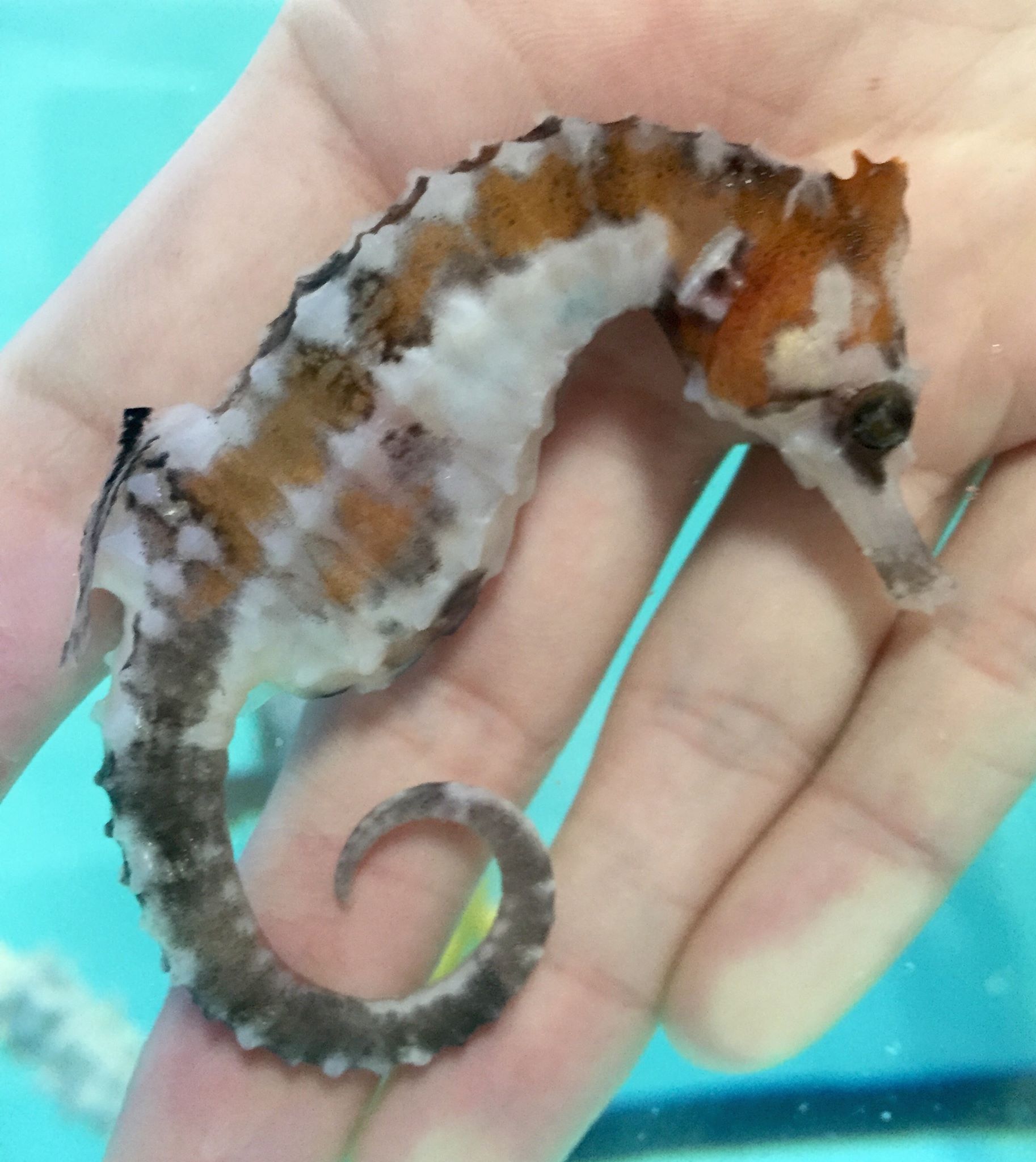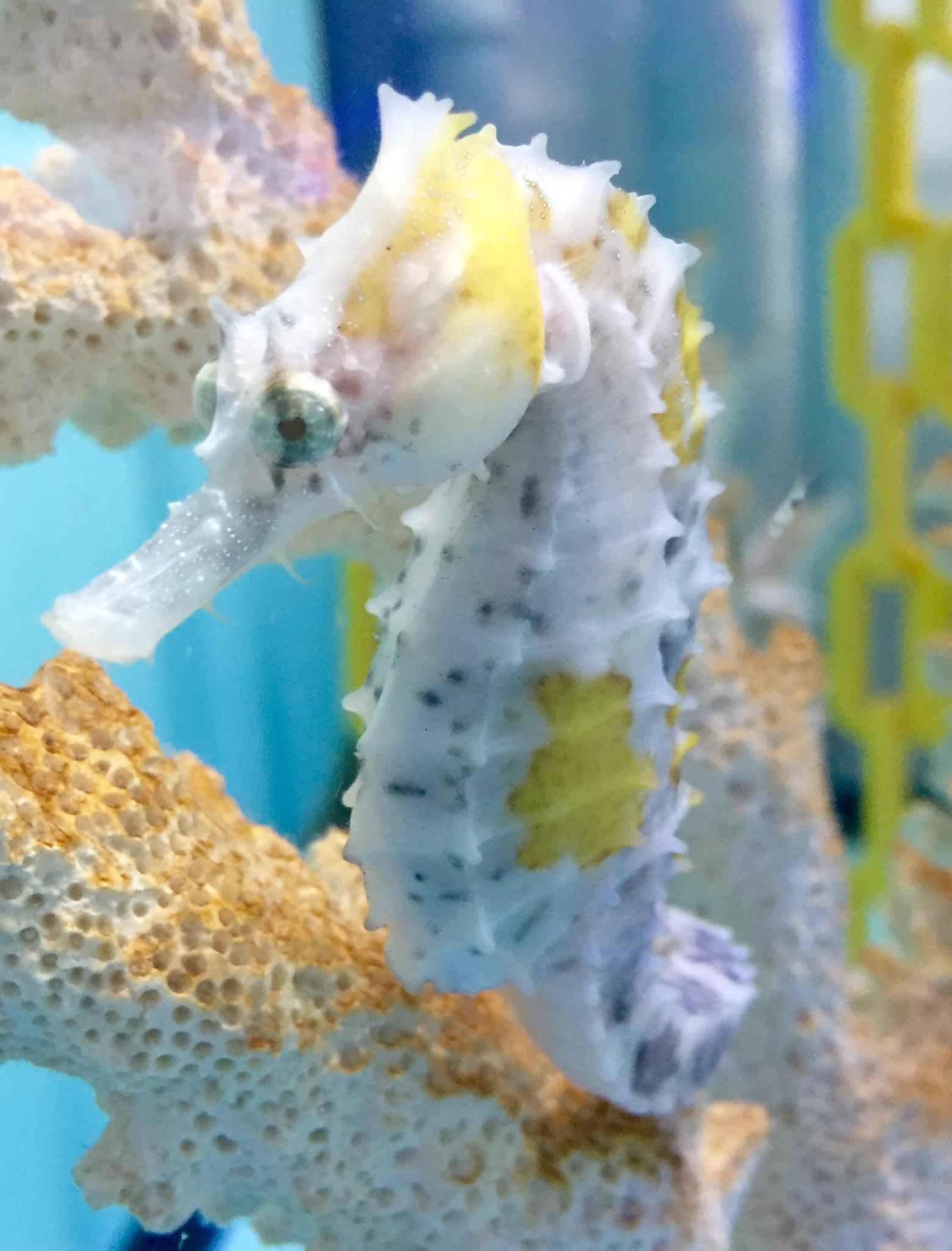Because they bear live young, seahorses were among some of the first marine fish to be bred in captivity. With a long history of captive breeding you’d think that there would be more domesticated strains of various Hippocampus species, and there are, you just don’t really hear about it too much.
Due to their special care requirements, seahorses don’t really mix well with a population of common reef fish, either in a reef aquarium, or in a fish only tank. Because of this, keeping and breeding seahorses is a hobby unto itself, but breeders have developed some interesting breeds – most notably, the Pinto Seahorse.

Pinto Seahorses have a unique and sometimes very attractive piebald pattern which is mostly only seen in captive bred seahorses. The patchy white or grey pattern can make a striking appearance, very similar to real four-legged pinto horses, hence the name.
Of all the established seahorse breeders, Alyssa’s Seahorse Savvy seems to have put the most effort into establishing and promoting their piebald Pinto Seahorses. We reached out to Alyssa to tell us more about these domesticated and captive bred seahorses:
“Our Piebald seahorses are Hippocampus erectus seahorses. We have had a couple dozen from several different broods from a pair of wild Erectus that were collected in the Florida Keys for us about a year ago.
Most of the juveniles look like the parent stock (typical lines and saddling markings) but a few individuals in each brood (typically ranging from 300-600 seahorses) have the unique piebald coloration. Most of these we have kept and hope to work with them as they mature. Others have gone to a public aquarium for display (Long Island Aquarium) and dedicated hobbyist.

We also have two individuals who are slightly piebald in coloration from a different unrelated pair of our wild Erectus. Our hope is to pair up some of our extreme piebalds with these since they are not related. Some of the Piebalds we refer to as Extreme have a lot of the white or unpigmented coloration.
These are much less common in our stock than the “silver” piebalds. Most of the Piebalds we have had have more silver pigmentation on a normal base coloration. Some have also been completely silver or a mix of both white, silver and some normal base color which is very neat.”
While there are entire posters dedicated to documenting all the different strains of captive bred clownfish, the domestication of of captive bred seahorses has been woefully unreported. We hope some of the seahorse lovers out there appreciate knowing that like actual horses, there’s a lot of fun possible with seahorse genetics as well, and thanks to Alyssa Seahorse Savvy for these images and information.



